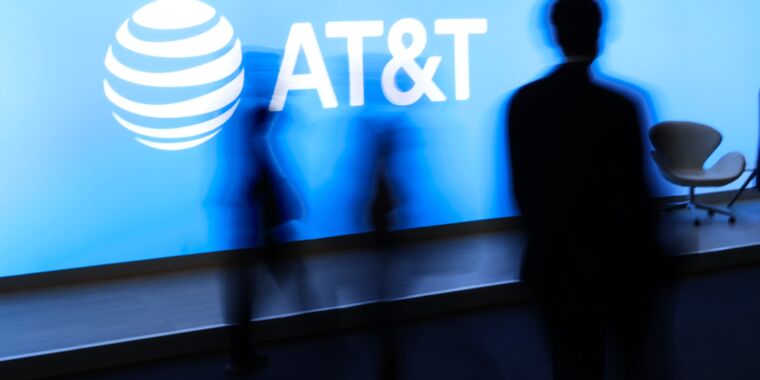
Getty Images | Joan Cros Garcia-Corbis
Newly raised concerns about lead-covered telephone cables installed in the US decades ago are pressuring companies like AT&T and Verizon to identify the locations of all cables and consider any health problems that may be caused by the toxic metal.
U.S. Senator Edward Markey (D-Mass.) wrote a letter this week to the USTelecom industry trade group following a Wall Street Journal investigative report titled “America Is Wrapped in Miles of Toxic Lead Cables.” The WSJ said it had found evidence of more than 2,000 lead-covered cables and there are “probably many more across the country”.
WSJ reporters had researchers collect samples as part of their investigation. They “found that where lead contamination was present, the amount measured in the soil was highest directly below or next to the cables and fell within a few feet — a sign that the lead was coming from the cable,” the article said.
Markey wrote to USTelecom: “According to the Wall Street Journal investigation, AT&T, Verizon and other telecom giants have left behind a vast network of cables covered in toxic lead that stretches across the US, underwater, in the ground and on poles. ” overhead… As the lead breaks down, it ends up in places where Americans live, work and play.'”
Markey wants answers
Markey wants answers to a series of questions by July 25:
Do the companies know the locations and mileage of the lead-sheathed cables they own or are responsible for, whether airborne, underwater or underground? Are there plans of the locations and installations? If not, what plans do the companies have to identify the cables?
Why haven’t the companies that knew about the cables – and the potential exposure risks they pose – taken any notice or action?
Markey also asked what plans telcos have to address environmental and public health issues that can arise from lead cables. He asked the companies to commit to “testing for soil, water and other contamination caused by the cables,” to fix any contamination and to warn communities of the potential hazards.
Markey also asked USTelecom if the phone companies will “guarantee medical treatment and compensation to anyone harmed by lead poisoning caused by the cables.”
Markey isn’t the only lawmaker expressing concern. “There is no safe level of exposure to lead –no— which is why I am so disturbed by these reports of lead cable lines across the country,” U.S. Representative Frank Pallone Jr. (D-NJ) told the WSJ. “It is imperative that these cables are properly investigated and addressed. “
Rep. Patrick Ryan (D-NY) told the Journal he is considering legislation to fix cable contamination and that telecom companies should “do the right thing and clean up their mess.” The Journal said the tests at a playground in Ryan’s county recorded “high levels of lead under an aerial cable that ran along the perimeter of the park.”
An article in Light Reading quoted New Street Research analysts as saying that “the WSJ article raises the likelihood that the phone companies could face significant financial exposure in the future that the market had not anticipated” and that AT&T is likely to faces “the greatest exposure” due to the size of its network.
USTelecom: No need to worry
A spokesperson for USTelecom told Ars today, “We are in discussions with stakeholders on this important issue. The U.S. telecom industry is prioritizing the health and safety of our communities and employees. We have seen no evidence, nor have regulators identified, that legacy Lead-sheathed telecom cables are a major cause of lead exposure or the cause of a public health problem.”
USTelecom has also set up a “Telecom Cable Facts” website to address concerns. “The use of lead alloys in telecom cables began in the 1880s and the industry began phasing out the placement of new lead-sheathed cables in the 1950s following the development of a new type of sheathing,” the trade group’s website states. “Some of these cables still provide voice and data services for customers, including connecting 911 service, fire alarms and other central control rooms.”
We’ve reached out to AT&T and Verizon today and will update this article if we get a response.
The WSJ reported: “Telecom companies have known about lead-covered cables and the potential risks of exposure to their employees for many years, according to documents and interviews with former employees. They were also aware that there may be lead in the environment. , but have not responded meaningfully to potential health risks to surrounding communities or made efforts to control the cables.”
Markey’s letter called that passage from the article “particularly concerning” and “corporate irresponsibility of the worst kind.” He said telecom companies have a “civil and legal” duty to address the problem and promised he will “watch closely from my seats on Senate committees that have jurisdiction over the environmental and public health problems posed by these cables.” Markey chairs the Senate Environment and Public Works Subcommittee on Clean Air, Climate and Nuclear Safety.

